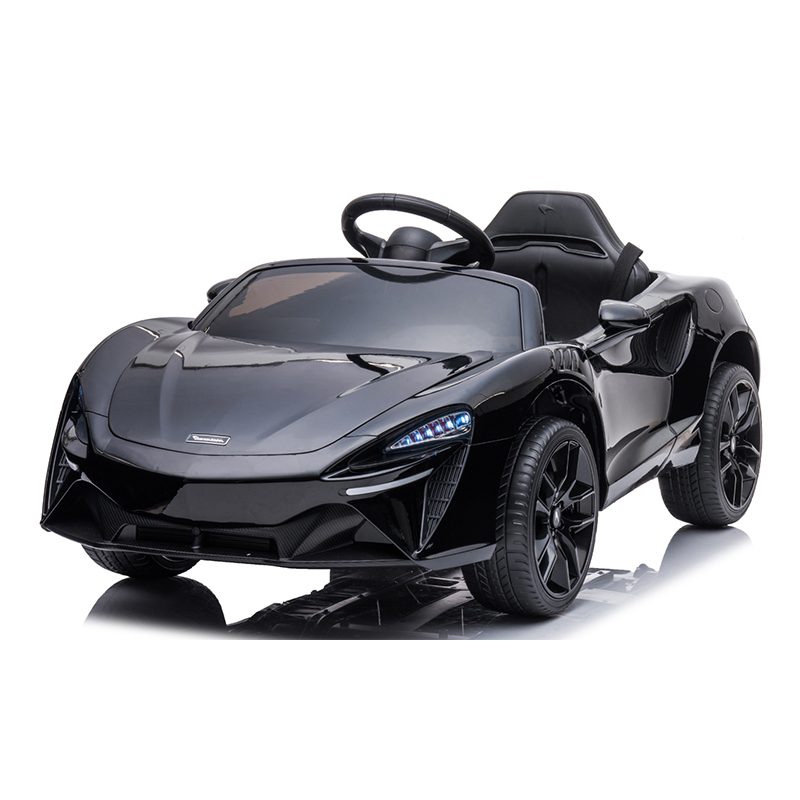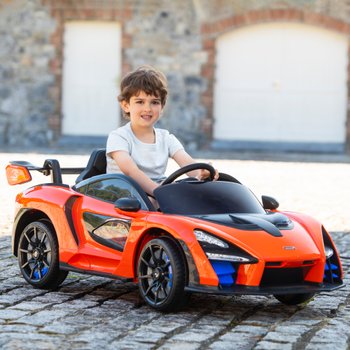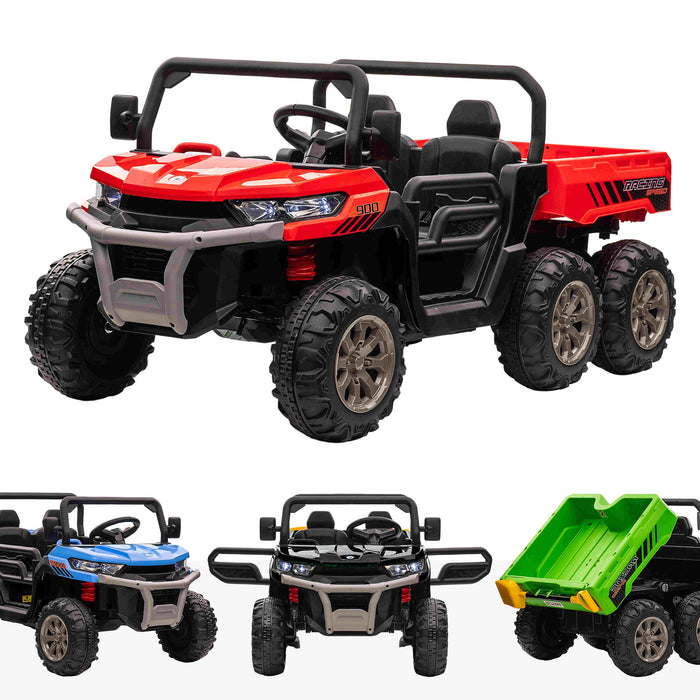Safety features are important to consider when choosing a ride-on vehicle for your child. This will ensure that they are safe during their playing time. Seat Belts and other safety elements are crucial.
Pros They are the best option to ensure your child is secure in the car they ride in. They reduce the chance of him slipping out of the play area or getting removed from the car. Seat belts provide an extra layer of security for your child, particularly in the case of sudden stops or abrupt turns.
Cons - Some rides-on-cars do not include seat belts. This is particularly the case for cars specifically designed specifically for children. In addition, kids may find the seat belts uncomfortable or tight, which can lead to refusal or resistance to using them.
Sturdy Construction
Pros - A ride-on vehicle that is built with strength and high-quality materials is more robust and resistant to damages that ensures long-term safety and reliability. It is made to be strong enough to stand up to the demands of the game while ensuring stability.
Cons - Construction that is durable is often more expensive, which makes it unaffordable for some families. Further, heavier materials could hinder mobility and maneuverability.
Low Center of Gravity
Pros - Cars with ride-ons that have low centers of gravity are less prone to tipping over, which reduces the possibility of injuries and accidents. They provide better balance and stability, especially during turns or maneuvers.
Cons - Some ride-on cars with a lower center gravity compromise ground clearance and off-road capabilities and can restrict their flexibility.
Remote Control for Parents -
Pros: Remote controlled cars give parents the capability to supervise and monitor their children's play, providing an additional layer of control and safety. Parents can intervene to prevent accidents, navigate difficult terrain and support their child in the event of a crisis.
Cons Parents who control their children's remotes may limit the autonomy and independence of children as they are dependent on parental assistance and guidance during play. Furthermore, models which can be controlled remotely may be more costly than those that have manual controls.
Speed Limiters
Pros - Ride-on cars with speed limiters or variable speed settings let parents control the maximum speed of the vehicle, reducing the risk of accidents or collisions. They can increase the maximum speed as the child's confidence increases.
Cons - Some children may get out of the lower speeds quickly, which can lead to frustration or dissatisfaction with the ride-on car. Some models may not have speed limiters or require additional options or features.
Safe Start Technology -
Pros - Safe start technology ensures that the ride-on car is able to stop and start up quickly, reducing the chance of lurches or sudden jerks that could startle or destabilize the child. It's safer and comfortable to ride.
Cons: Cars that are ride-on equipped with safe start may cost more than standard cars. Furthermore, children might find the gradual acceleration and deceleration to be less thrilling or exciting as opposed to immediate stops and starts.
Visibility Enhancements
Pros- Ride-on cars with enhanced visibility features like working headlights (or taillights) reflective material or other features increase visibility. This is helpful in dimly lit or dim environments. They enhance safety by making the vehicle more visible to other pedestrians or vehicles.
Cons - Visibility enhancements could make batteries less efficient or alter ride-on vehicle designs, causing more maintenance and malfunction risk.
If you consider the pros and con of each safety feature you may choose the ride-on vehicle that is safe and offers a fun experience for your child. Have a look at the recommended JCB ride on toys for website info including toy cars, toy in car, toy car, childrens electric ride on, ride on car, riding digger, electric toy car, 2 seater electric cars, car toy car toy, car electric ride on and more. .

What Maintenance And Assembly Requirements Exist For Kids' Ride On Automobiles?
To ensure optimal performance, safety and durability, kid's rides-on cars require some form of assembly. Here are the most common maintenance and assembly specifications for ride-on cars for children. - - Assembly -
Most ride-on cars come partially assembled and require some assembly upon their arrival. Attaching the steering wheel, wheels seats, and other components to the ride-on vehicle in accordance with the specifications from the manufacturer is the most commonly used method.
Be sure to follow the assembly instructions carefully and ensure that every component is securely secured. To complete the assembly, you will need the tools and accessories provided.
Cleaning -
The ride-on vehicles need to be cleaned frequently to ensure they look the best and work properly. Clean the exterior surfaces with a damp soft sponge or cloth that has been soaked in mild soapy water. This removes dirt, dust and other particles.
Pay attention to areas prone to build up such as tires or wheels, as well as the undercarriage. Use a brush or the tooth brush to clean areas that are hard to reach and eliminate stubborn dirt.
Avoid using harsh chemical cleaners, abrasive chemicals, or high-pressure water sprays, since they could cause damage to the electronic or paint parts of the ride-on vehicle.
Battery Care
It is essential to take care of the battery in case your vehicle that you ride on is powered by a battery that can be recharged. This will help maintain its performance and extend the life of your battery. Use these guidelines to take care of your battery -
Charge the battery prior to every use and then fully after. This ensures that you have maximum performance.
Do not overcharge your battery, or leaving it connected to a charger for an lengthy period. Both of these can harm it and reduce its lifespan.
If not in use when not in use, store the ride on battery and car away from direct sunlight or extreme temperatures.
If needed, clean the terminals with the help of a terminal cleaner or wire brush when they are corrosion-prone.
If the battery no longer charges or displays signs of damage, replace it.
Tire Maintenance -
Check the tires regularly to check for signs such as wear, damage or the loss of pressure. Tires can be inflated to the level recommended by with a bicycle or an air compressor.
The tread pattern should be examined for foreign objects, debris, or other obstructions that can cause flats. Repair or replace damaged tires by clearing any obstructions.
Lubricate the wheels and axles bearings regularly to ensure a smooth and efficient rotation. reduce friction.
Periodic repairs or replacements
Despite the regular maintenance, some ride-ons may need repairs or parts replacements from wear and wear and.
Keep an eye out for signs that your system may be malfunctioning or deteriorating, including unusual sounds or behaviors and power outages, as well as other abnormalities. For troubleshooting or repair options look up the instructions of the manufacturer.
To avoid further damage replace damaged or worn parts as soon as is possible to ensure safety and functionality.
Follow these guidelines to keep your child's ride-on car and provide hours of fun and safe play for them. View the recommended go here for kids cars for site examples including kiddies cars, ride ons, childs electric ride on car, childrens electric ride on, toy toy cars, toy ride, car toy toy, two seater childrens electric cars, car toy toy, lambo toy car and more. .

What Is The Best Way To Choose A Budget For The Purchase Of A Ride-On Car For A Child?
Be aware of factors such as durability, longevity, financial situation, as well as features when you set a budget. Find the best deal for your budget by doing some research about average prices.
Find out the cost average for the particular model of child's ride-on car that you are interested in. Toy stores, online retailers and websites of manufacturers are a great source of price information.
Choose Must-Have Features to Have
Find out which features are necessary to your child's pleasure and security. Features such as working headlights, realistic sounds as well as remote controls for the parents and seat belts can affect the price of the ride-on car.
Prioritize your features based on your child's tastes and financial budget.
Take into consideration longevity and durability -
Pick ride-on cars constructed of durable materials such as high-quality metals or plastics. They are able to withstand regular usage and harsh outdoor conditions.
To get a better understanding of the endurance and long-term durability review the product or ask for the opinions of other parents. The upfront cost of a durable ride-on car can help you save money in the long run by avoiding frequent repair and replacements.
Compare prices with different stores
Compare prices from different retailers and find the best deal. Visit online retailers as well as local department and toy stores for deals and competitive prices.
Find sales, clearances or sales that can make it easier to save money on your purchase, without losing quality.
Calculate the additional cost
If you're considering the possibility of a ride-on car for your child, think about the extra costs, such as shipping fees, taxes and accessories.
Budget for the total cost of ownership. This includes all accessories or necessary maintenance expenses.
Budget realistically -
Based on your research and financial situation, set an affordable budget that's in line with your goals and needs. You should consider the features, durability, and long-term use in determining the maximum amount you can afford for a ride on car.
Don't spend too much or use your budget to include irrelevant features to your child's play.
Consider the value over time Consider the long-term value
Evaluate the long-term value of the kid's ride-on vehicle in terms of its endurance as well as its versatility and capacity to adapt alongside your child. It may be worth investing in a higher-end model that has more features in the long term.
By setting a budget and carefully comparing prices, features, durability, and longevity to find the most value for money when purchasing an auto for your child to ride in your child. Consider the features that are essential to your child’s safety and satisfaction while making sure you are mindful of your budget. View the best JCB ride on toys kidscars.co.uk recommendations for site recommendations including toy car, lambo toy car, two seater childrens electric cars, childrens digger, ride on toy, toy the car, two seater electric cars, kids electric cars, toy with car, two seater childrens electric cars and more. .
